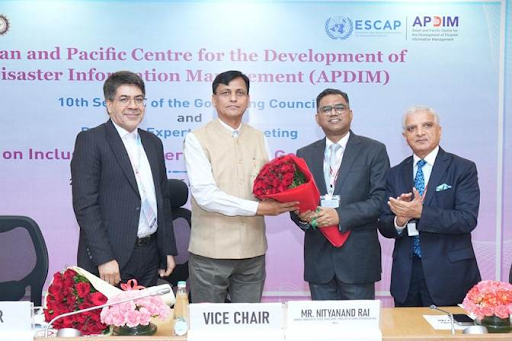Description

Disclaimer: Copyright infringement not intended.
Context: Days after China and Pakistan held a meeting to bring other countries into the China-Pakistan Economic Corridor (CPEC), India said that efforts to broaden CPEC’s scope are “inherently illegal”.
More on the news:
- The Joint Working Group of International Cooperation and Coordination under CPEC met on July 21, when the Pakistani and Chinese officials discussed bringing in a third county into the fold.
- CPEC consists of a number of infrastructure projects that are under construction across Pakistan and is aimed at connecting China overland with the Gulf countries by cutting through the Himalayan range in Gilgit Baltistan and the Pakistan-occupied Kashmir.
- Soon after coming to power in Afghanistan last year, the Taliban had expressed desire to join the infrastructure project.
- India reminded Taliban and similar potential third parties of the problems associated with the CPEC, saying, “Such activities are inherently illegal, illegitimate and unacceptable, and will be treated accordingly by India.”
- Earlier, Pakistan signed a new agreement with China to begin the second phase of the USD 60 billion China-Pakistan Economic Corridor (CPEC).
What is CPEC?
- CPEC is a 3,000-km long route of infrastructure projects connecting China’s northwest Xinjiang Uygur Autonomous Region and the Gwadar Port in the western province of Balochistan in Pakistan.
- It is a bilateral project between Pakistan and China, intended to promote connectivity across Pakistan with a network of highways, railways, and pipelines accompanied by energy, industrial, and other infrastructure development projects.
- It will pave the way for China to access the Middle East and Africa from Gwadar Port, enabling China to access the Indian Ocean and in return China will support development projects in Pakistan to overcome the latter’s energy crises and stabilising its faltering economy.
- CPEC is a part of the Belt and Road Initiative.

Background:
- In 2013, Chinese President Xi Jinping, during his visits to Kazakhstan and Indonesia, expressed his vision to build a Silk Road Economic Belt (SERB) and a 21st Century Maritime Silk Road (MSR), to break the “bottleneck” in Asian connectivity. Thus, the Belt and Road initiative was born.
- The initiative envisioned a Chinese-led investment of over $1 trillion in partner countries by 2025. More than 60 countries have now joined BRI agreements with China, with infrastructure projects under the initiative being planned or under construction in Asia, Africa, Europe, and Latin America.
- To finance BRI projects, China offers huge loans at commercial interest rates that countries have to pay within a fixed number of years.
- The west has accused China of debt-trapping by extending “predatory loans” that force countries to cede key assets to China. However, research indicates that low and middle-income countries are often the ones to approach China after not being able to secure loans from elsewhere.
- In recent years, the BRI seems to have experienced a slowing down as annual Chinese lending to countries under the initiative slimmed from its peak of $125 billion in 2015 to around $50 to 55 billion in 2021.
Investments in the Indian neighbourhood:
- The biggest project under BRI is in Pakistan, the China Pakistan Economic Corridor(CPEC). Over time, China pledged $62 billion in low-interest loans and financing from Chinese state-owned banks and the Asian Development Bank (ADB).
- Bangladesh, which joined the BRI in 2016, has been promised the second-highest belt and road investment by China in South Asia after Pakistan.
- In Sri Lanka, multiple infrastructure projects that were being financed by China came under the fold of the BRI after it was launched in 2013. The island nation in the last couple of years has witnessed competition between India and China in port terminal and energy projects. In 2021, Colombo ejected India and Japan out of a deal to develop the East Container Terminal at the Colombo port and got China to take up the project. Some BRI projects in Sri Lanka have been described as white elephants — such as the Hambantota port.
- Afghanistan has not comprehensively been brought into the BRI, despite a Memorandum of Understanding (MoU) being signed with China in 2016
- One of the most prominent BRI projects undertaken in the Maldives is the two km long China-Maldives Friendship Bridge — a $200 million four lane bridge.
https://epaper.thehindu.com/Home/ArticleView
1.png)












